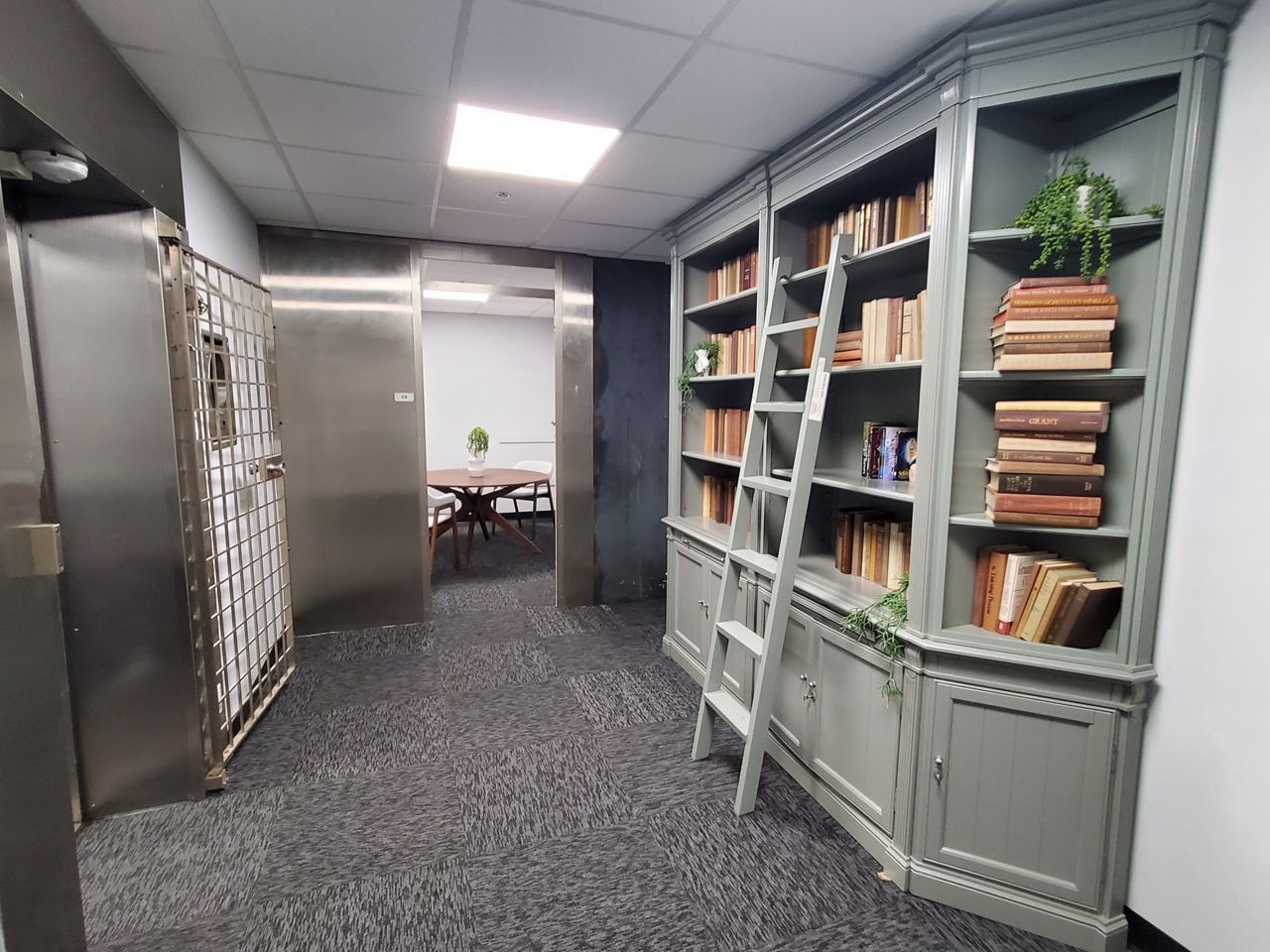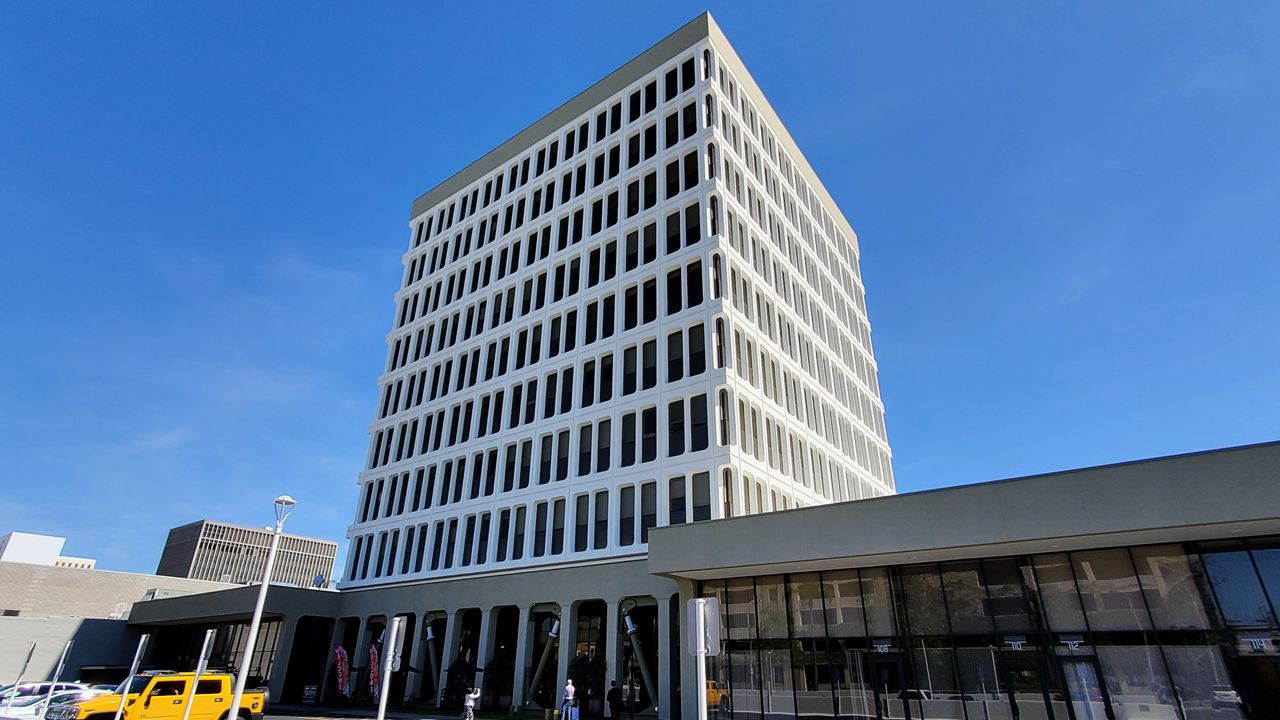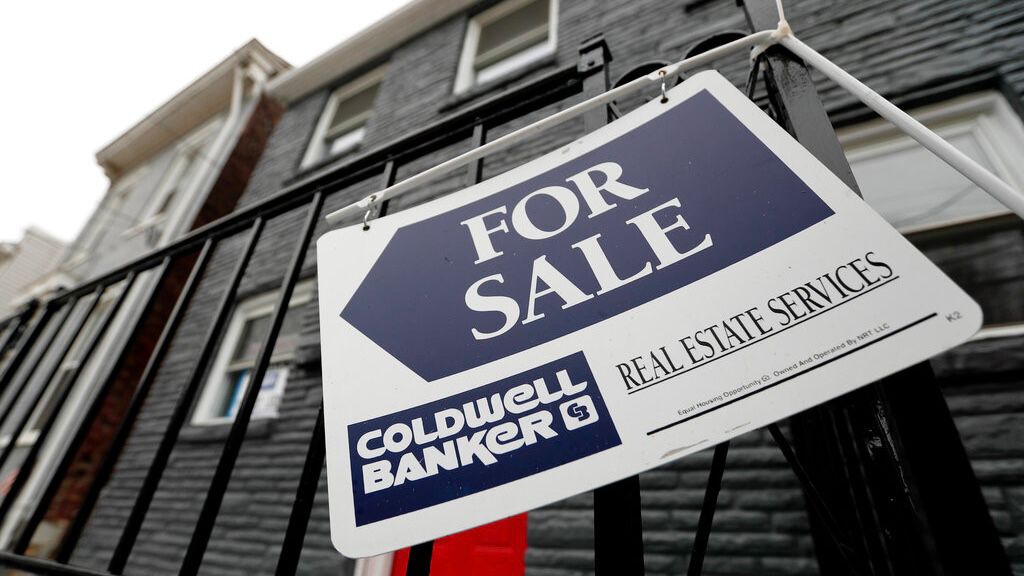SANTA ANA, Calif. — The 888 Tower in Santa Ana looks like any downtown high-rise office building.
The white new formalism-styled 10-story building, built-in 1967 by famous architect Welton Beckett (the person who designed the iconic Capitol Records building in Hollywood), once served as Security Bank's Orange County headquarters and later Orange County's Social Services Administration building.
But these days, instead of working professionals occupying cubicles in dimly lit offices, many people live inside.
Every office building wants to feel like home. Well, one real estate developer took that to heart.

Calabasas-based Alliant Strategic Development has converted the 10-story office building, now called 888 on Main, into residential workforce housing in downtown Santa Ana.
The building's office space has been creatively transformed into living spaces with units that look like chic industrial lofts with high ceilings.
Large double-door offices have turned into two-bedroom units. Alliant converted smaller offices into studios and one-bedrooms. Ground floor office buildings turned into live-work lofts. The men's and women's bathrooms are now coin-op laundry and storage for residents on some floors.
The bank vault in the basement is now a library room and business center. There's a fitness center and other amenities found in high-rise apartments.
The conversion of 888 Tower on 888 North Main St. could signal a new wave of turning old dormant office buildings into functional residential units.
Experts say converting vacant office buildings could be a great way to help stem Southern California's growing housing crisis.
"It's a very unique project not just for Santa Ana but Orange County," said Jeff Gould, principal and founder of Lineage Asset Advisors, which helped broker the sale deal.

Coronavirus pandemic-related reasons forced many companies to initially flee their offices to slow the spread of the virus. But heading into year three of the pandemic, in some cases, companies are rethinking whether to keep their office space or continue to have employees work remotely.
Offices were hit hard by the pandemic. According to Voit Real Estate Services, at the end of 2019, Orange County's office direct vacancy was 11.4%.
In the past two years, the county's office vacancy has risen to 16%, JLL reported. In Costa Mesa and some areas of the county, direct office vacancy is as high as 23%.
"There are other [office] buildings a block or two away from us that are near empty," said Wil Smolen, director of construction at Alliant Strategic, in an interview with Spectrum News. "These buildings are near obsolescence. People looking for offices want to be in Irvine, Newport Beach, and newer buildings with all of the amenities. These [older] buildings are falling slowly into obsolescence. Vacancies are increasing. Occupancy is going down. Some are even fully vacant, and the pandemic has worsened that."

Adaptive reuse of commercial buildings such as retail, hotel, and office buildings into residential units is nothing new. It's a trend that began in 2010 but really picked up steam during the pandemic.
According to YardiMatrix, developers nationwide converted 151 commercial buildings into residential apartments totaling 20,100 rooms.
"So far, through adaptive reuse alone, this new decade has already created nearly 32,000 apartments, 41% of which are in former office buildings," according to the author of the report released last fall.
The author said one-quarter of all future conversion projects are former office buildings. Hotel conversions are the most popular.
Los Angeles has 1,073 residential units converted from office buildings in the past two years, the YardiMatrix report states.
While it may seem a no-brainer to convert an old office building into an apartment, Smolen said it's not easy.
Alliant Strategic purchased the 888 Tower from Caribou Industries for $54 million in 2020.
The goal was to transform the old office building, vacant since 2014, to workforce housing — reserved for residents earning 80 to 120% of the area's median income.
The process was, at times, challenging, Smolen said. Smolen did not disclose how much they spent on converting the building.
Smolen said the office building only had two restrooms on each floor. But with people living there, they needed to build a bathroom in each unit. The old sewage system wouldn't handle the number of people expected to live there, so they had to create a new sewer system.
The Orange County Fire Authority also required the developer to install fire sprinklers on each floor and install a fire water storage tank, new pumps, and a backup electric generator.
Smolen said they were also fortunate that the building layout made it easier to convert the offices into residential units.
"The geometry of the building worked out for us," he said. "It allowed us to play with and come up with different apartment designs."
He said the building offered great county views, a plus for residents.
The building opened last summer and is currently 88% occupied.

Gould, the broker, said with the region facing a housing crisis, it only makes sense to convert old office buildings into apartments.
"We need housing any way we can produce it," said Gould. "Post-COVID, there is less need for office and even more need for housing. It just makes sense."










